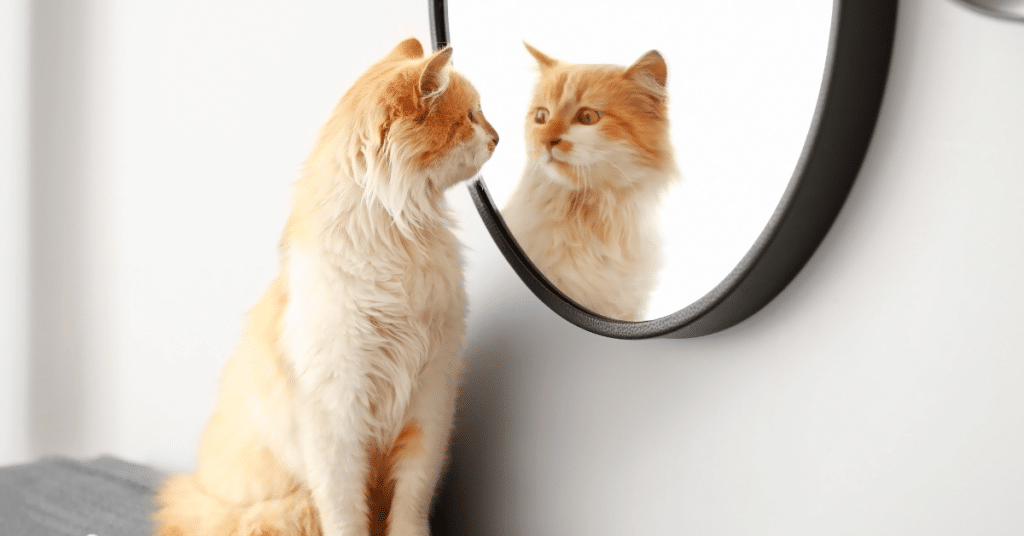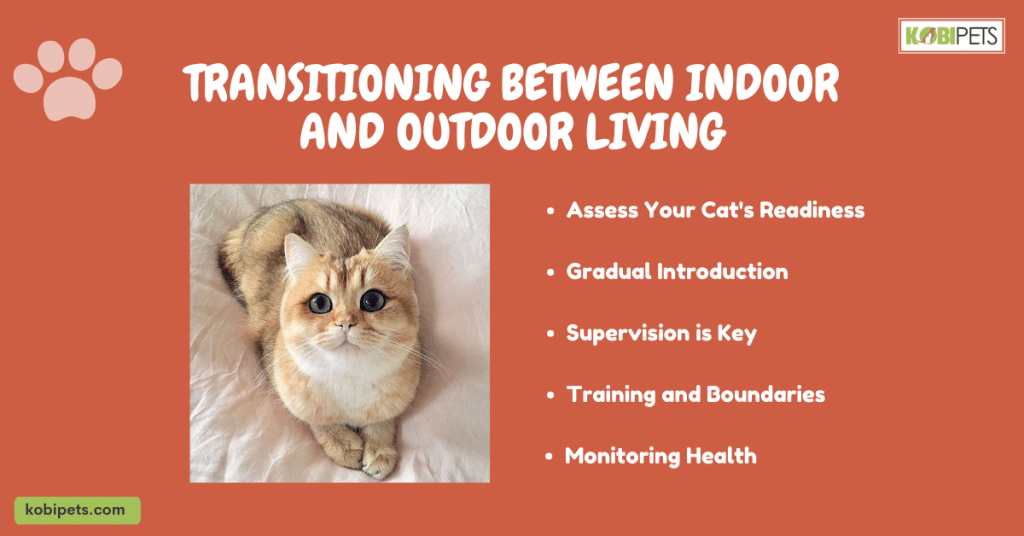
Deciding between indoor and outdoor living for your cat is a crucial choice for their safety and well-being. Indoor cats often live longer due to reduced risks, while outdoor cats enjoy mental stimulation but face dangers. Find the right balance based on your cat’s needs and your environment.
Choosing between indoor and outdoor living for your cat is a pivotal decision with far-reaching implications for their safety and happiness. This article will guide you through this important choice, offering insights into the pros and cons of each option, and helping you strike the right balance for your furry companion.
The Case for Indoor Cats
There are compelling reasons to opt for indoor living when it comes to your beloved feline friend. Perhaps the most significant advantage is the increased safety and enhanced longevity that indoor cats typically enjoy. The world outside can be fraught with dangers, including traffic accidents and encounters with potential predators.
By keeping your cat indoors, you provide them with a secure haven where these hazards are minimized. This level of protection is especially valuable in urban or bustling environments where the risks to outdoor cats are significantly higher. Additionally, indoor cats are less likely to contract diseases from other outdoor animals, ensuring their health and well-being.

The Case for Outdoor Cats
Outdoor exploration holds a unique allure for many cats, offering a range of benefits that cater to their innate instincts and desires. One of the primary advantages of outdoor living is the ample mental stimulation and exercise it provides. The great outdoors serves as a natural playground where cats can indulge their hunting instincts, pouncing on insects or chasing after fallen leaves. This physical and mental engagement can be highly enriching for their overall well-being.
Cats are born hunters and explorers, and outdoor living allows them to satisfy these natural inclinations fully. The world beyond your doorstep provides endless opportunities for your feline companion to indulge their curiosity, whether it’s stalking birds, investigating new scents, or simply basking in the sun.

Finding the Right Balance
Choosing the right living arrangement for your feline companion isn’t always straightforward. Your cat’s personality and preferences play a significant role in this decision. Striking the perfect balance between indoor and outdoor experiences is essential for their happiness and well-being.
Consider Your Cat’s Individual Needs
Every cat has its own distinct temperament, energy level, and comfort zone. Some cats may thrive indoors, finding solace and contentment within the safety of four walls. Others may possess a strong sense of adventure, yearning for the excitement and exploration that outdoor life can offer.
To make the right choice, take time to understand your cat’s personality and preferences. Consider factors such as their age, previous experiences, and comfort with unfamiliar environments. This assessment will serve as a foundation for your decision.

Provide Mental Stimulation for Indoor Cats
For cats that call the indoors their home, it’s vital to provide ample mental stimulation to prevent boredom and promote their overall well-being. Interactive toys, puzzle feeders, and treat-dispensing games can be wonderful ways to keep your indoor kitty engaged and satisfied.
These activities tap into their natural instincts to hunt and explore, ensuring they remain mentally and physically active. Regular playtime and attention from you also contribute to a happy and well-adjusted indoor cat.

Creating Safe Outdoor Spaces
If your cat yearns for outdoor experiences, it’s essential to introduce them to the outside world in a controlled and secure manner. Enclosed gardens, commonly referred to as “catios,” offer a protected outdoor environment where your cat can enjoy fresh air, sunshine, and the sights and sounds of nature without exposing them to potential dangers.
You can also consider leash training, allowing your cat supervised outdoor outings while maintaining a firm grip on their safety. By creating these safe outdoor spaces, you grant your cat the freedom to explore while maintaining peace of mind about their security.

Health and Safety Considerations
Understanding the risks and taking appropriate precautions is essential for ensuring your cat’s well-being. In this section, we delve into the critical factors that should guide your decision, including the health risks of outdoor living, the significance of regular vet check-ups and vaccinations for outdoor cats, and maintaining indoor cat health.
| Aspects | Outdoor Cats | Indoor Cats |
|---|---|---|
| Health Risks | – Exposure to parasites and diseases. | – Reduced risk of exposure to parasites and diseases. |
| – Injuries from fights or accidents. | – Lower risk of injuries from outdoor hazards. | |
| Vet Check-ups and Vaccines | – Regular vet visits are crucial to monitor health and address issues promptly. | – Routine vet visits are essential to maintain health. |
| – Vaccinations are necessary to protect against common outdoor diseases. | – Vaccinations against outdoor diseases may be less necessary. | |
| Indoor Cat Health | – Preventing obesity through controlled diet and exercise. | – Enriching indoor environment for mental stimulation. |
Balancing your cat’s health and safety is an integral part of the indoor vs. outdoor living decision. Whether your cat enjoys outdoor adventures or thrives indoors, regular vet check-ups, vaccinations, and appropriate health management are vital.

Transitioning Between Indoor and Outdoor Living
Whether you’re moving from indoors to outdoors or vice versa, it requires careful planning and consideration. In this section, we’ll provide valuable insights into how to smoothly navigate this change, emphasizing gradual adjustments, supervision, and effective boundary-setting.

- Assess Your Cat’s Readiness: Evaluate your cat’s personality and adaptability to gauge whether they’re suited for outdoor life or if they need to transition indoors.
- Gradual Introduction: When transitioning to outdoor living, start by allowing short, supervised outings in a controlled environment, like a catio or enclosed garden.
- Supervision is Key: Always supervise your cat during initial outdoor experiences to ensure their safety and provide immediate guidance.
- Training and Boundaries: Implement leash training or use safe outdoor enclosures to establish clear boundaries for your outdoor cat.
- Monitoring Health: Maintain regular vet check-ups and vaccinations to safeguard your cat’s well-being.
Transitioning between indoor and outdoor living can be a fulfilling journey for both you and your cat. By taking gradual steps, offering supervision, and setting clear boundaries, you can help your feline friend adapt to their new environment comfortably and safely.
In conclusion
Transitioning your cat between indoor and outdoor living requires careful planning and consideration of their unique needs and personality. Whether you’re introducing them to the great outdoors or bringing them indoors, the key is to proceed gradually, offering supervision and clear boundaries. By following these steps, you can ensure a smooth and safe transition for your beloved feline companion, allowing them to enjoy the best of both worlds while prioritizing their well-being.






